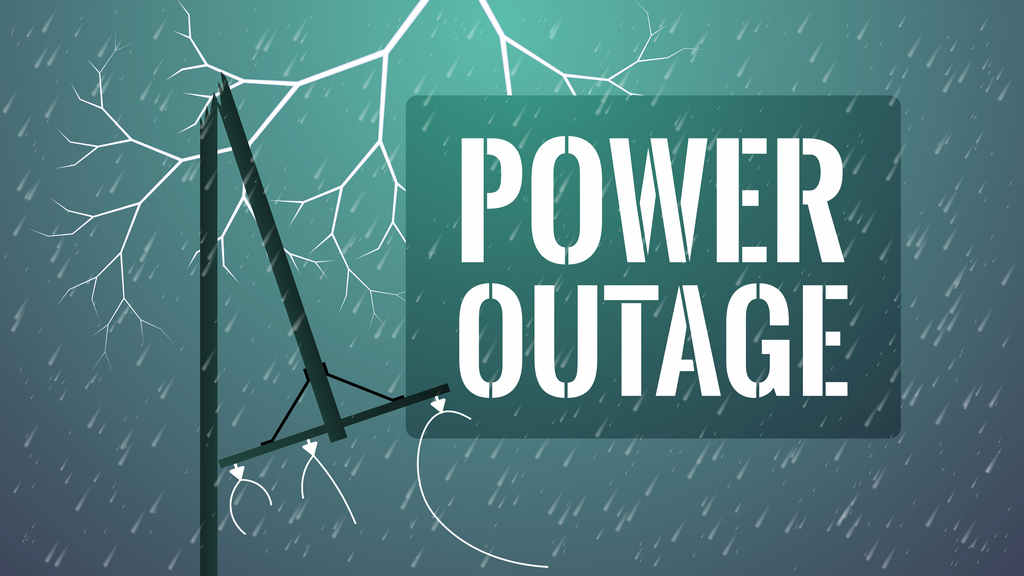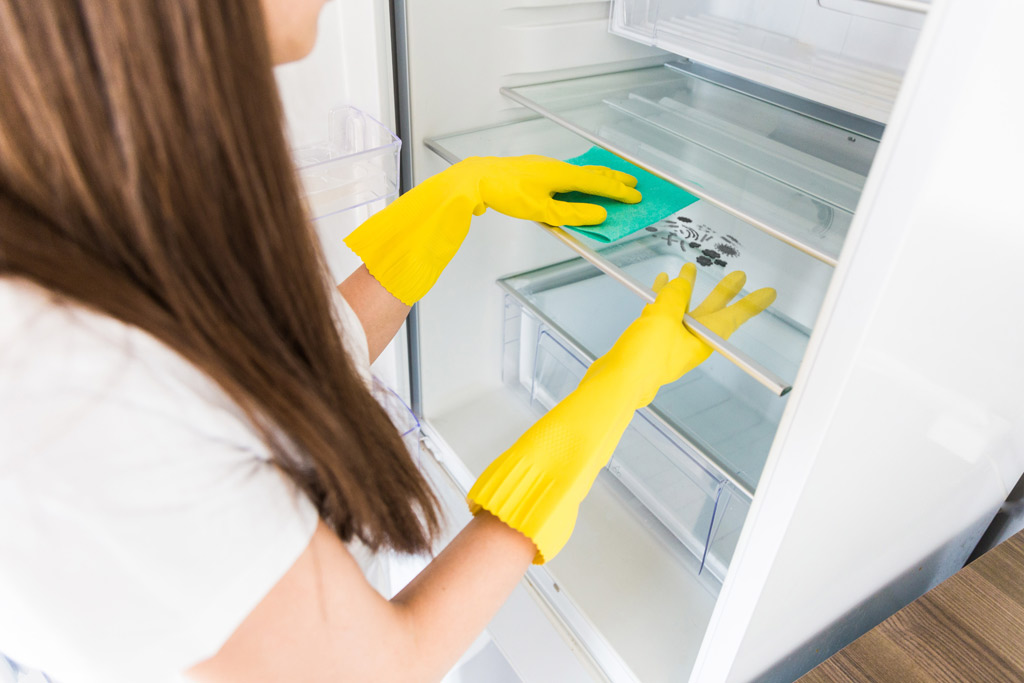Flood waters can contain foodborne pathogens, sewage, petroleum products and heavy metals as well as other contaminants. Some contaminants cannot be removed using standard cleaning and sanitation practices (product reconditioning) and cannot be removed using proper cooking procedures. The FDA states that many food products must be destroyed after exposure to flood waters.



Before and after weather emergencies, it is important to have a plan in place for food and water during a disaster and what do to after the disaster. Knowing how to determine if food is safe and how to keep food safe will help minimize the potential loss of food and reduce the risk of foodborne illness.
- Learn about proper hygiene, cross contamination, cold and hot food safety, foodborne pathogens, and best practices to prevent foodborne illness.
- Food Manager Training & ANSI Certification - $99.00
- Food Handler Training - only $7.00!
- HACCP Training: 16hr/4hr/1hr
- Food Allergy Training - $15.00
- Enter Promo "train10off" at Checkout
Tips Food Safety After a Flood
- Power Outages
- Safety of Food in Containers Exposed to Flood Waters
- Removing Odors from Refrigerators & Freezers
- Refrigerator Foods
- Frozen Food
1. Power Outages
We practice basic safe food handling in our daily lives, but obtaining and storing food safely becomes more challenging during a power outage or natural disasters such as floods.



Steps to Follow to Prepare for a Possible Weather Emergency:
Keep an appliance thermometer in the refrigerator and freezer. An appliance thermometer will indicate the temperature in the refrigerator and freezer in case of a power outage and help determine the safety of the food.
- Make sure the freezer is at 0 °F (Fahrenheit) or below and the refrigerator is at 40 °F or below.
- Freeze containers of water for ice to help keep food cold in the freezer, refrigerator, or coolers after the power is out.
- Freeze refrigerated items such as leftovers, milk, and fresh meat and poultry that you may not need immediately-this helps keep them at a safe temperature longer.
- Plan ahead and know where dry ice and block ice can be purchased.
- Store food on shelves that will be safely out of the way of contaminated water in case of flooding.
- Have coolers on hand to keep refrigerator food cold if the power will be out for more than 4 hours. Purchase or make ice cubes and store in the freezer for use in the refrigerator or in a cooler. Freeze gel packs ahead of time for use in coolers.
- Group food together in the freezer—this helps the food stay cold longer.
Steps to Follow During and After the Weather Emergency:
- Never taste a food to determine its safety!
- Keep the refrigerator and freezer doors closed as much as possible to maintain the cold temperature.
- The refrigerator will keep food safely cold for about 4 hours if it is unopened. A full freezer will hold the temperature for approximately 48 hours (24 hours if it is half full and the door remains closed).
- Food may be safely refrozen if it still contains ice crystals or is at 40 °F or below.
- Obtain block ice or dry ice to keep your refrigerator and freezer as cold as possible if the power is going to be out for a prolonged period of time. Fifty pounds of dry ice should hold an 18-cubic-foot full freezer for 2 days.
- If the power has been out for several days, then check the temperature of the freezer with an appliance thermometer or food thermometer. If the food still contains ice crystals or is at 40 °F or below, the food is safe.
- If a thermometer has not been kept in the freezer, then check each package of food to determine its safety. If the food still contains ice crystals, the food is safe.
- Discard refrigerated perishable food such as meat, poultry, fish, soft cheeses, milk, eggs, leftovers, and deli items after 4 hours without power.
- When in Doubt, Throw it Out!
2. Safety of Food in Containers Exposed to Flood Waters
How to Determine What Food to Keep or Discard
- Do not eat any food that may have come into contact with flood water.
- Discard any food that is not in a waterproof container if there is any chance that it has come into contact with flood water. Food containers that are not waterproof include those with screw-caps, snap lids, pull tops, and crimped caps. Also, discard cardboard juice/milk/baby formula boxes and home canned foods if they have come in contact with flood water, because they cannot be effectively cleaned and sanitized.
- Inspect canned foods and discard any food in damaged cans. Can damage is shown by swelling, leakage, punctures, holes, fractures, extensive deep rusting, or crushing/denting severe enough to prevent normal stacking or opening with a manual, wheel-type can opener.
Pots, Pans, Dishes, and Utensils
- Thoroughly wash metal pans, ceramic dishes, and utensils (including can openers) with soap and water, using hot water if available. Rinse and then sanitize them by boiling in clean water or immersing them for 15 minutes in a solution of 1 tablespoon of unscented, liquid chlorine bleach per gallon of drinking water (or the cleanest, clearest water available).
Countertops
- Thoroughly wash countertops with soap and water, using hot water if available. Rinse and then sanitize them by applying a solution of 1 tablespoon of unscented, liquid chlorine bleach per gallon of drinking water (or the cleanest, clearest water available). Allow to air-dry.
Steps to Salvage All-Metal Cans and Retort Pouches
Undamaged, commercially prepared foods in all-metal cans and retort pouches (for example, flexible, shelf-stable juice or seafood pouches) can be saved if you do the following:
- Remove the labels, if they are the removable kind, since they can harbor dirt and bacteria.
- Thoroughly wash the cans or retort pouches with soap and water, using hot water if it is available.
- Brush or wipe away any dirt or silt.
- Rinse the cans or retort pouches with water that is safe for drinking, if available, since dirt or residual soap will reduce the effectiveness of chlorine sanitation.
- Then, sanitize them by immersion in one of the two following ways:
- Place in water and allow the water to come to a boil and continue boiling for 2 minutes, or
- Place in a freshly made solution consisting of 1 tablespoon of unscented, liquid chlorine bleach per gallon of drinking water (or the cleanest, clearest water available) for 15 minutes.
- Air-dry cans or retort pouches for a minimum of 1 hour before opening or storing.
- If the labels were removable, then re-label your cans or retort pouches, including the expiration date (if available), with a marker.
- Food in reconditioned cans or retort pouches should be used as soon as possible, thereafter.
- Any concentrated baby formula in reconditioned, all-metal containers must be diluted with clean, drinking water.
Safety of Drinking Water If Flooding Occurs
- Use bottled water that has not been exposed to flood waters if it is available.
- If you don’t have bottled water, you should boil water to make it safe. Boiling water will kill most types of disease-causing organisms that may be present. If the water is cloudy, filter it through clean cloths or allow it to settle, and draw off the clear water for boiling. Boil the water for one minute, let it cool, and store it in clean containers with covers.
- If you can’t boil water, you can disinfect it using household bleach. Bleach will kill some, but not all, types of disease-causing organisms that may be in the water. If the water is cloudy, filter it through clean cloths or allow it to settle, and draw off the clear water for disinfection. Add 1/8 teaspoon (or 8 drops) of regular, unscented, liquid household bleach for each gallon of water, stir it well and let it stand for 30 minutes before you use it. Store disinfected water in clean containers with covers.
- If you have a well that has been flooded, the water should be tested and disinfected after flood waters recede. If you suspect that your well may be contaminated, contact your local or State health department or agriculture extension agent for specific advice.
3. Removing Odors from Refrigerators & Freezers
Refrigerators and freezers are two of the most important pieces of equipment in the kitchen for keeping food safe. We are instantly reminded of their importance when the power goes off, flooding occurs, or the unit fails, causing food to become unsafe and spoil. The odors that develop when food spoils can be difficult to remove. Use this information to learn how to remove odors from units or how to safely discard an affected unit.



To Remove Odors from Refrigerators and Freezers
If food has spoiled in a refrigerator or freezer and odors from the food remain, they may be difficult to remove. The following procedures may help but may have to be repeated several times.
- Dispose of any spoiled or questionable food.
- Remove shelves, crispers, and ice trays. Wash them thoroughly with hot water and detergent. Then rinse with a sanitizing solution (1 tablespoon unscented, liquid chlorine bleach per gallon of water).
- Wash the interior of the refrigerator and freezer, including the door and gasket, with hot water and baking soda. Rinse with sanitizing solution as above.
- Leave the door open for about 15 minutes to allow free air circulation.
If odor remains, try any or all of the following:
- Wipe inside of unit with equal parts vinegar and water. Vinegar provides acid which destroys mildew.
- Leave the door open and allow to air out for several days.
- Stuff both the refrigerator and freezer with rolled newspapers. Close the door and leave for several days. Remove paper and clean with vinegar and water.
- Sprinkle fresh coffee grounds or baking soda loosely in a large, shallow container in the bottom of the refrigerator and freezer.
- Place a cotton swab soaked with vanilla inside the refrigerator and freezer. Close door for 24 hours. Check for odors.
- Use a commercial product available at hardware and housewares stores. Follow the manufacturer’s instructions.
If Odors Remain
If odors cannot be removed, then the refrigerator or freezer may need to be discarded. If you need to discard the refrigerator or freezer, discard it in a safe manner:
- “Childproof” old refrigerators or freezers so children do not get trapped inside. The surest way is to take the door off.
- If the door will not come off, chain and padlock the door permanently and close tightly, or remove or disable the latch completely so the door will no longer lock when closed.
It is unlawful in many jurisdictions to discard old refrigerators or freezers without first removing the door.
Depending on where you live, your appliance will be picked up by your solid waste provider, a recycler, a retailer (if you buy a new unit), or program sponsored by local or regional utilities.
4. Refrigerator Foods
| When to Save and When to Throw It Out | |
|---|---|
| FOOD | Held above 40 °F for over 2 hours |
| MEAT, POULTRY, SEAFOOD Raw or leftover cooked meat, poultry, fish, or seafood; soy meat substitutes | Discard |
| Thawing meat or poultry | Discard |
| Meat, tuna, shrimp,chicken, or egg salad | Discard |
| Gravy, stuffing, broth | Discard |
| Lunchmeats, hot dogs, bacon, sausage, dried beef | Discard |
| Pizza — with any topping | Discard |
| Canned hams labeled “Keep Refrigerated” | Discard |
| Canned meats and fish, opened | Discard |
| CHEESE Soft Cheeses: blue/bleu, Roquefort, Brie, Camembert, cottage, cream, Edam, Monterey Jack, ricotta, mozzarella, Muenster, Neufchatel, queso blanco, queso fresco | Discard |
| Hard Cheeses: Cheddar, Colby, Swiss, Parmesan, provolone, Romano | Safe |
| Processed Cheeses | Safe |
| Shredded Cheeses | Discard |
| Low-fat Cheeses | Discard |
| Grated Parmesan, Romano, or combination (in can or jar) | Safe |
| DAIRY Milk, cream, sour cream, buttermilk, evaporated milk, yogurt, eggnog, soy milk | Discard |
| Butter, margarine | Safe |
| Baby formula, opened | Discard |
| EGGS Fresh eggs, hard-cooked in shell, egg dishes, egg products | Discard |
| Custards and puddings | Discard |
| CASSEROLES, SOUPS, STEWS | Discard |
| FRUITS Fresh fruits, cut | Discard |
| Fruit juices, opened | Safe |
| Canned fruits, opened | Safe |
| Fresh whole fruits, coconut, raisins, dried fruits, candied fruits, dates | Safe |
| SAUCES, SPREADS, JAMS Opened mayonnaise, tartar sauce, horseradish | Discard if above 50 °F for over 8 hrs. |
| Peanut butter | Safe |
| Jelly, relish, taco sauce, mustard, catsup, olives, pickles | Safe |
| Worcestershire, soy, barbecue, Hoisin sauces | Safe |
| Fish sauces (oyster sauce) | Discard |
| Opened vinegar-based dressings | Safe |
| Opened creamy-based dressings | Discard |
| Spaghetti sauce, opened jar | Discard |
| BREAD, CAKES, COOKIES, PASTA, GRAINS Bread, rolls, cakes, muffins, quick breads, tortillas | Safe |
| Refrigerator biscuits, rolls, cookie dough | Discard |
| Cooked pasta, rice, potatoes | Discard |
| Pasta salads with mayonnaise or vinaigrette | Discard |
| Fresh pasta | Discard |
| Cheesecake | Discard |
| Breakfast foods — waffles, pancakes, bagels | Safe |
| PIES, PASTRY Pastries, cream filled | Discard |
| Pies — custard,cheese filled, or chiffon; quiche | Discard |
| Pies, fruit | Safe |
| VEGETABLES Fresh mushrooms, herbs, spices | Safe |
| Greens, pre-cut, pre-washed, packaged | Discard |
| Vegetables, raw, whole | Safe |
| Vegetables, cooked; tofu | Discard |
| Vegetable juice, opened | Discard |
| Baked potatoes | Discard |
| Commercial garlic in oil | Discard |
| Potato Salad | Discard |
5. Frozen Food
| When to Save and When To Throw It Out | ||
|---|---|---|
| FOOD | Still contains ice crystals and feels as cold as if refrigerated | Thawed. Held above 40 °F for over 2 hours |
| MEAT, POULTRY, SEAFOOD Beef, veal, lamb, pork, and ground meats | Refreeze | Discard |
| Poultry and ground poultry | Refreeze | Discard |
| Variety meats (liver, kidney, heart, chitterlings) | Refreeze | Discard |
| Casseroles, stews, soups | Refreeze | Discard |
| Fish, shellfish, breaded seafood products | Refreeze. However, there will be some texture and flavor loss. | Discard |
| DAIRY Milk | Refreeze. May lose some texture. | Discard |
| Eggs (out of shell) and egg products | Refreeze | Discard |
| Ice cream, frozen yogurt | Discard | Discard |
| Cheese (soft and semi-soft) | Refreeze. May lose some texture. | Discard |
| Hard cheeses | Refreeze | Refreeze |
| Shredded cheeses | Refreeze | Discard |
| Casseroles containing milk, cream, eggs, soft cheeses | Refreeze | Discard |
| Cheesecake | Refreeze | Discard |
| FRUITS Juices | Refreeze | Refreeze. Discard if mold, yeasty smell, or sliminess develops. |
| Home or commercially packaged | Refreeze. Will change texture and flavor. | Refreeze. Discard if mold, yeasty smell, or sliminess develops. |
| VEGETABLES Juices | Refreeze | Discard after held above 40 °F for 6 hours. |
| Home or commercially packaged or blanched | Refreeze. May suffer texture and flavor loss. | Discard after held above 40 °F for 6 hours. |
| BREADS, PASTRIES Breads, rolls, muffins, cakes (without custard fillings) | Refreeze | Refreeze |
| Cakes, pies, pastries with custard or cheese filling | Refreeze | Discard |
| Pie crusts, commercial and homemade bread dough | Refreeze. Some quality loss may occur. | Refreeze. Quality loss is considerable. |
| OTHER Casseroles — pasta, rice based | Refreeze | Discard |
| Flour, cornmeal, nuts | Refreeze | Refreeze |
| Breakfast items — waffles, pancakes, bagels | Refreeze | Refreeze |
| Frozen meal, entree, specialty items (pizza, sausage and biscuit, meat pie, convenience foods) | Refreeze | Discard |






